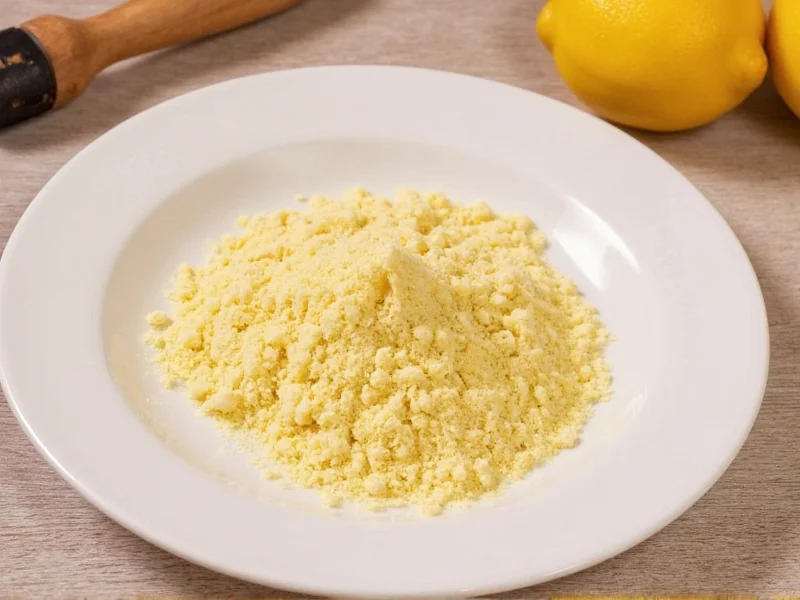Making powdered honey at home transforms liquid honey into a versatile dry ingredient that maintains its natural sweetness without the mess. This simple preservation technique allows you to enjoy honey's benefits in applications where liquid honey would cause clumping or spoilage. Whether you're a home baker looking to create perfectly mixed dry ingredients or an outdoor enthusiast needing lightweight sweeteners for camping trips, powdered honey solves common honey-related challenges while preserving its natural properties.
The Science Behind Powdered Honey
Powdered honey, sometimes called dried honey or honey powder, isn't actually pure dehydrated honey. True honey dehydration would create a hard, crystalline substance rather than a powder. Instead, the process involves combining honey with a drying agent that absorbs moisture while maintaining a powdery texture. The most common drying agents are maltodextrin (a food-grade starch derivative) and cornstarch, both of which are food-safe and help maintain honey's natural flavor profile.
When properly made, powdered honey contains approximately 95% honey solids and 5% drying agent. This ratio preserves honey's nutritional benefits while creating a shelf-stable product that won't crystallize, ferment, or attract moisture like liquid honey. The resulting powder dissolves easily in both hot and cold liquids, making it ideal for applications where traditional honey would cause texture issues.
Essential Ingredients and Equipment
Creating high-quality powdered honey requires specific ingredients and basic kitchen equipment. The quality of your starting materials directly impacts the final product's flavor, color, and shelf life.
| Essential Items | Recommended Specifications | Alternative Options |
|---|---|---|
| Liquid honey | Raw, unfiltered (1 cup) | Pasteurized honey (may affect flavor) |
| Drying agent | Maltodextrin (1/4 cup) | Cornstarch, tapioca starch |
| Dehydrator | Adjustable 95-140°F range | Oven with precise low-temp control |
| Grinding tool | High-speed blender or food processor | Coffee grinder (dedicated to food) |
| Storage containers | Air-tight glass jars with desiccant | Food-grade plastic containers |
Step-by-Step Powdered Honey Preparation
Follow these detailed instructions to create professional-quality powdered honey at home. The entire process takes approximately 24 hours, with minimal hands-on time.
Preparation Phase
- Choose your honey - Select raw, unfiltered honey for maximum flavor retention. Lighter honeys like clover produce a more neutral powder, while darker varieties like buckwheat create richer flavors.
- Measure ingredients - Use a 4:1 ratio of honey to drying agent (for example, 1 cup honey to 1/4 cup maltodextrin). This ratio ensures proper moisture absorption without diluting honey flavor.
- Mix thoroughly - In a non-stick pan over low heat (no higher than 110°F/43°C), combine honey and drying agent. Stir continuously until the mixture reaches a thick paste consistency with no visible dry spots.
Dehydration Process
- Spread mixture - Transfer the paste to dehydrator trays lined with non-stick sheets or parchment paper. Spread evenly to 1/8-inch thickness using an offset spatula.
- Dehydrate at proper temperature - Set dehydrator to 125°F (52°C). If using an oven, set to its lowest temperature with the door slightly ajar and monitor closely. Dehydration typically takes 12-24 hours.
- Check for dryness - The mixture is ready when it peels easily from the sheet and breaks cleanly without bending. Properly dehydrated honey should contain less than 3% moisture.
Final Processing
- Break into pieces - Once completely cooled, break the dried honey sheet into small chunks.
- Grind to powder - Process in short bursts in a high-speed blender until reaching a fine, uniform powder. Avoid overheating, which can cause clumping.
- Sift if necessary - For ultra-fine applications, sift through a fine mesh strainer to remove any larger particles.
- Store properly - Transfer to air-tight containers with food-safe desiccant packets to maintain dryness.
Troubleshooting Common Powdered Honey Issues
Even with careful preparation, you might encounter these common challenges when making powdered honey:
- Clumping during storage - This indicates moisture absorption. Solution: Add more desiccant packets to storage containers and ensure lids are completely sealed. For immediate use, microwave clumped powder in 5-second intervals to restore texture.
- Sticky consistency after grinding - The honey wasn't fully dehydrated. Solution: Return chunks to the dehydrator for additional drying time before re-grinding.
- Off-flavors or discoloration - Usually caused by overheating during preparation. Solution: Always keep temperatures below 140°F (60°C) to preserve honey's natural enzymes and flavor compounds.
- Difficulty dissolving in cold liquids - Some drying agents have slower dissolution rates. Solution: Use maltodextrin instead of cornstarch, or blend the powder with other dry ingredients before adding liquids.
Storage and Usage Recommendations
Proper storage extends powdered honey's shelf life while maintaining quality. Store in air-tight containers away from light and moisture. Include food-safe desiccant packets to absorb any ambient humidity. When stored correctly, homemade powdered honey maintains quality for 12-18 months.
For best results in recipes, use a 1:1.25 substitution ratio (1 cup powdered honey replaces 1 1/4 cups liquid honey). The drying agent content means you'll need slightly more volume to achieve equivalent sweetness. Powdered honey excels in:
- Dry baking mixes and instant oatmeal packets
- Smoothie powders and protein blends
- Seasoning rubs and dry marinades
- Cold-brew coffee sweetener packets
- Travel-friendly sweetener portions
Unlike liquid honey, powdered versions won't cause clumping in dry ingredients or alter the texture of baked goods. The powder dissolves completely in both hot and cold applications, making it versatile for nearly any recipe requiring honey's distinctive sweetness.











 浙公网安备
33010002000092号
浙公网安备
33010002000092号 浙B2-20120091-4
浙B2-20120091-4